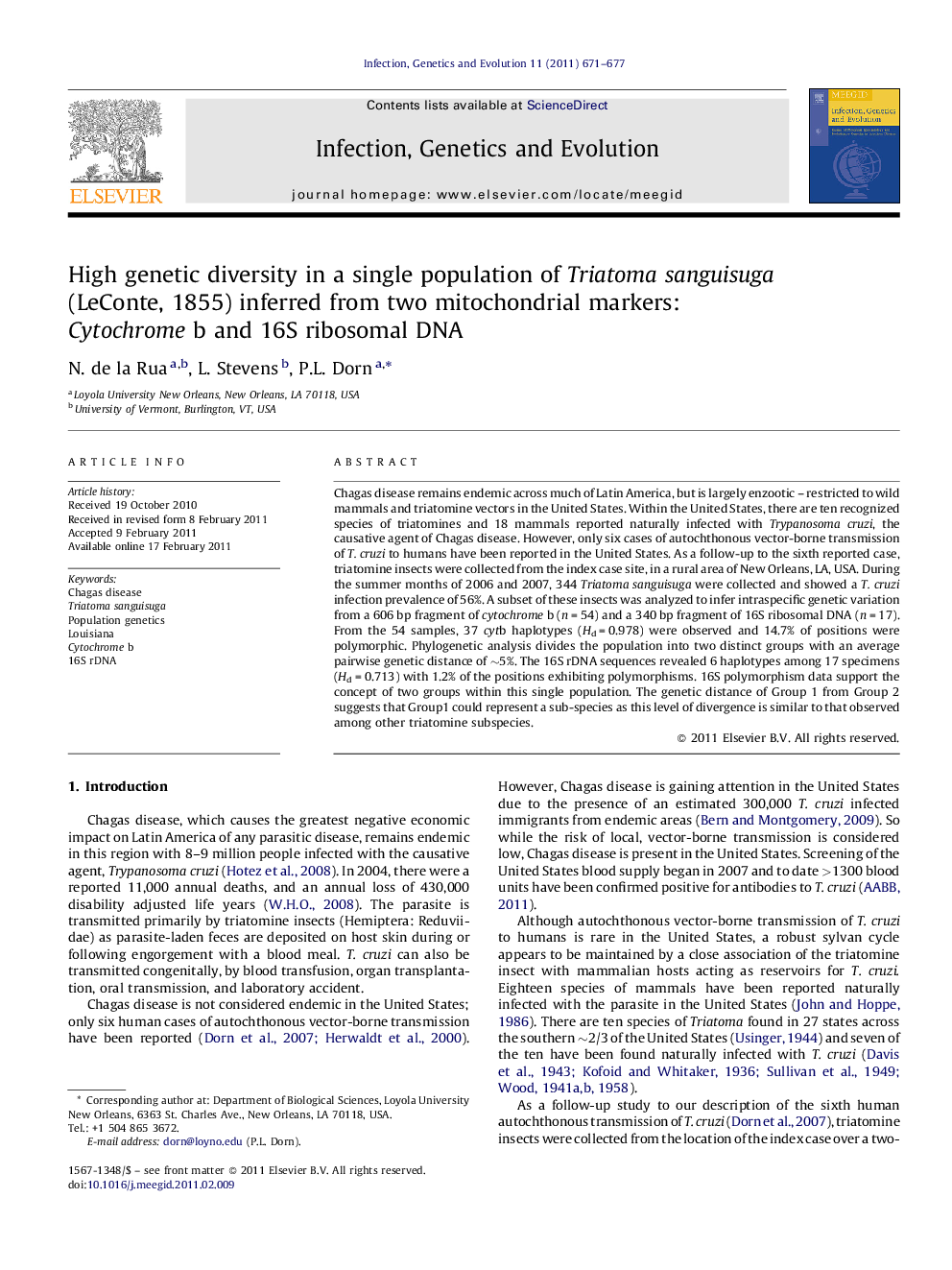| Article ID | Journal | Published Year | Pages | File Type |
|---|---|---|---|---|
| 5911727 | Infection, Genetics and Evolution | 2011 | 7 Pages |
Chagas disease remains endemic across much of Latin America, but is largely enzootic - restricted to wild mammals and triatomine vectors in the United States. Within the United States, there are ten recognized species of triatomines and 18 mammals reported naturally infected with Trypanosoma cruzi, the causative agent of Chagas disease. However, only six cases of autochthonous vector-borne transmission of T. cruzi to humans have been reported in the United States. As a follow-up to the sixth reported case, triatomine insects were collected from the index case site, in a rural area of New Orleans, LA, USA. During the summer months of 2006 and 2007, 344 Triatoma sanguisuga were collected and showed a T. cruzi infection prevalence of 56%. A subset of these insects was analyzed to infer intraspecific genetic variation from a 606 bp fragment of cytochrome b (n = 54) and a 340 bp fragment of 16S ribosomal DNA (n = 17). From the 54 samples, 37 cytb haplotypes (Hd = 0.978) were observed and 14.7% of positions were polymorphic. Phylogenetic analysis divides the population into two distinct groups with an average pairwise genetic distance of â¼5%. The 16S rDNA sequences revealed 6 haplotypes among 17 specimens (Hd = 0.713) with 1.2% of the positions exhibiting polymorphisms. 16S polymorphism data support the concept of two groups within this single population. The genetic distance of Group 1 from Group 2 suggests that Group1 could represent a sub-species as this level of divergence is similar to that observed among other triatomine subspecies.
